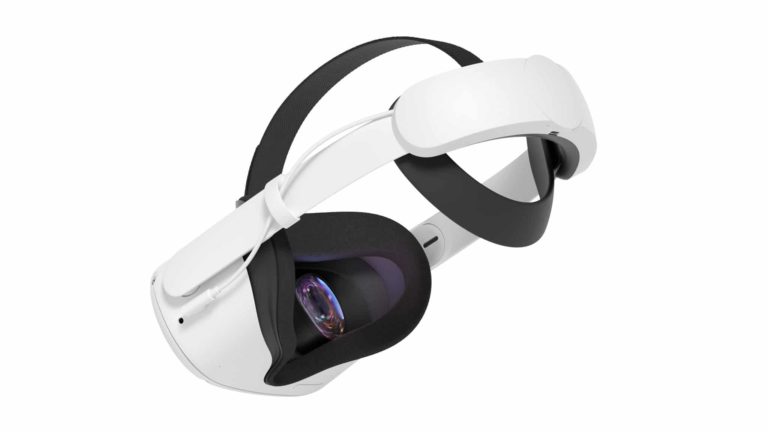
One striking realization about spatial computing is that we’re almost seven years into the sector’s current stage. This traces back to Facebook’s Oculus acquisition in early 2014 that kicked off the current wave of excitement….including lots of ups and downs in the intervening years.
That excitement culminated in 2016 after the Oculus acquisition had time to set off a chain reaction of startup activity, tech-giant investment, and VC inflows for the “next computing platform.” But when technical and practical realities caught up with spatial computing….it began to retract.
Like past tech revolutions – most memorably, the dot com boom/bust – spatial computing has followed a common pattern. Irrational exuberance is followed by retraction, market correction, and scorched earth. But then a reborn industry sprouts from those ashes and grows at a realistic pace.
That’s where we now sit in spatial computing’s lifecycle. It’s not the revolutionary platform shift touted circa-2016. And it’s not a silver bullet for everything we do in life and work as once hyped. But it will be transformative in narrower ways, and within a targeted set of use cases and verticals.
This is the topic of ARtillery’s recent report, Spatial Computing: 2020 Lessons, 2021 Outlook. Key questions include, what did we learn in the past year? What are projections for the coming year? And where does spatial computing — and its many subsegments — sit in its lifecycle?
Spatial Cousin
Picking up where we left off in examining AR’s evolutionary arc, what about its spatial cousin, VR? The short version of VR’s state of the union is that it’s still a potentially transformative technology, but its traction continues to be a slow and steady process.
We recently estimated in our global VR forecast that sector revenue will grow from $4.98 billion in 2019 to $12.2 billion in 2024, a 19.6 percent compound annual growth rate (CAGR). This consists of consumer ($2.67 billion in 2020) and enterprise spending ($1.21 billion in 2020).
Consumer spending is driven by gaming’s lead as a use case. VR conversely has valuable but narrow use in enterprise settings due to its degree of sensory immersion that compromises safety, social presence, and ergonomics. But it is showing promise as a training tool.
Like many sectors, VR has been impacted by the ongoing Covid-19 global pandemic. Though demand has remained strong during global lockdowns (VR is aligned with Covid-era demand signals such as gaming), the industry has suffered from supply-chain impediments.
One key factor counteracting those declines is Facebook’s multi-billion-dollar investments to seed content, demand, and compelling hardware. These investments come at a sizeable short-term cost for Facebook, but they advance the company’s long-term ambitions and network effect.
A Quest for Market Share
Facebook’s VR strategy is best embodied in its latest hardware: Oculus Quest 2. By all measures, the device is a hit. After pre-launch rumors of a cheaper “lite” Quest or a more-loaded “Pro” Quest….we ended up getting the best of both: upgraded hardware with a $100 price reduction.
One success metric is professional reviews, which are mostly unanimous in their praise of the device. Not to take away from UX execution, one factor at play is Facebook’s aggressive pricing. Its long-term VR strategy lets it sacrifice near-term margins to build a network effect.
This loss-leader pricing gives us a device that’s much cheaper than it should be. That’s great for consumers but the dark side of that equation is a device that’s very hard to compete against — especially for margin-dependent hardware players in Oculus’ competitive field.
“That’s the shocker,” said Tested’s Norman Chan in his review of the device. “Quest 2 is not going to be more expensive than Quest 1. [It’s] launching at $300 — a whole $100 less than Quest 1 […] Facebook must be taking a huge loss with this because it’s aggressive, aggressive pricing.”
But professional reviews and our analyst speculation admittedly only go so far. The true test will be how the market receives Quest 2. The VR industry has been waiting for its hero device to get over the mainstream adoption hump — wheels that were greased to some degree by Quest 1.
Clues Emerge
We don’t know enough about Quest 2 sales volume but a few positive signals are beginning to materialize. These signals continue to make themselves evident in the marketplace. Clues can be used to extrapolate unit sales, given that Oculus doesn’t report figures.
One such signal emerged during Facebook’s Q4 earnings call when the company reported 156 percent year-over-year growth in non-advertising revenue. Most of this growth was from Quest 2, which launched at the beginning of Q4 which suggested 1-million units sold to date.
In addition to demand, Quest 2’s ramp-up over the past two quarters were also about supply. Facebook got a better sense of market demand with Quest 1, whose perpetual sold-out status throughout 2020 (partly Covid-related) indicated underestimated and underserved demand.
Oculus gained key insights, which it now factors in to Quest 2’s supply-chain. It has scaled up to meet greater demand, so Quest 2’s penetration at least won’t be supply-constrained. And it’s working, considering Quest 2 has outsold all previous Oculus headsets combined.
“We really couldn’t be happier,” Facebook Reality Labs’ Chris Pruett told Protocol in the only level of detail that he’s understandably allowed to say publicly. “The device is selling quite well…faster than Quest did…and maybe a little bit beyond what we expected.”
We’ll pause there and circle back in the next installment with more from this report. Meanwhile, check out the entire thing here.

